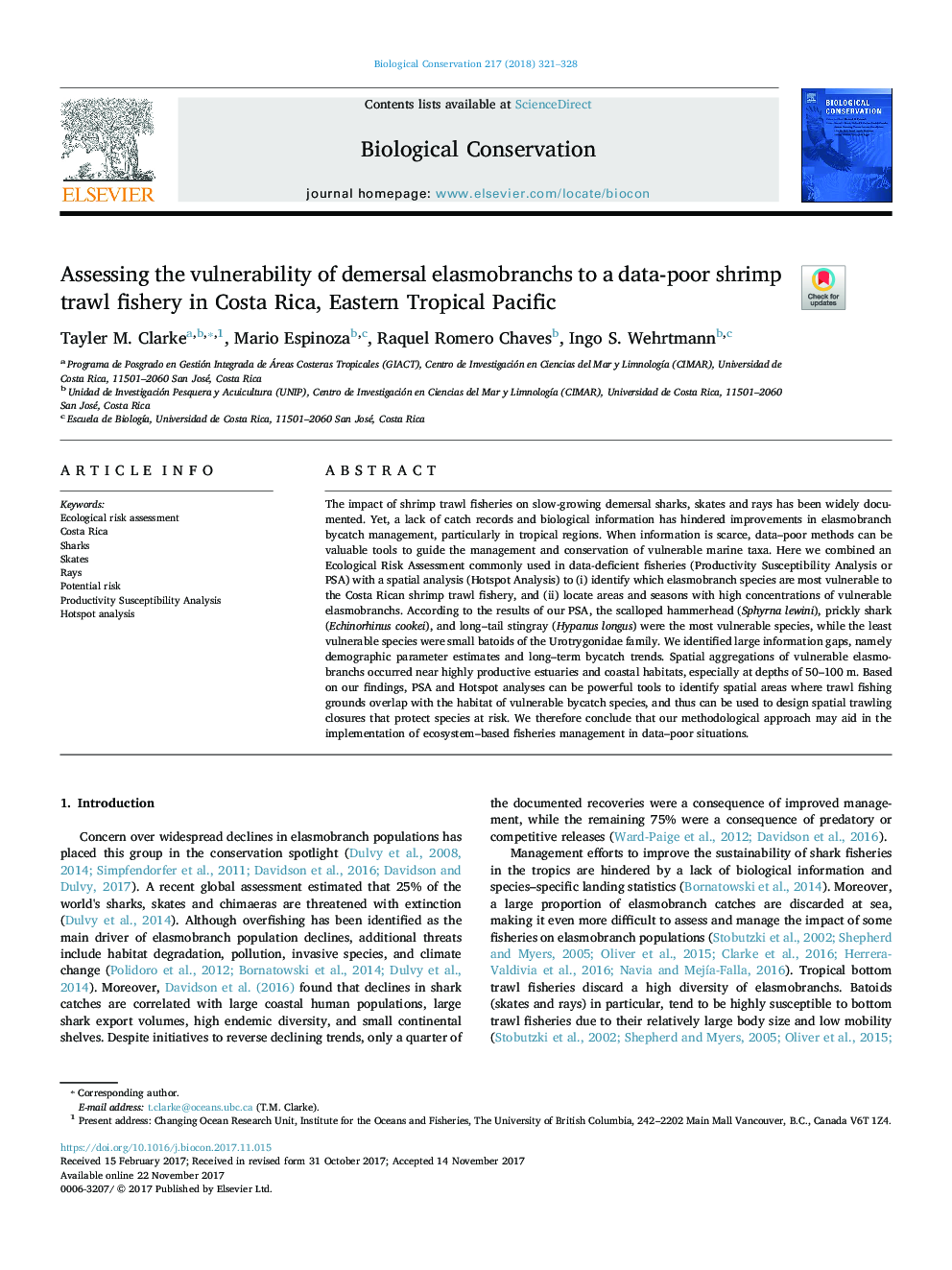| کد مقاله | کد نشریه | سال انتشار | مقاله انگلیسی | نسخه تمام متن |
|---|---|---|---|---|
| 8847611 | 1617888 | 2018 | 8 صفحه PDF | دانلود رایگان |
عنوان انگلیسی مقاله ISI
Assessing the vulnerability of demersal elasmobranchs to a data-poor shrimp trawl fishery in Costa Rica, Eastern Tropical Pacific
ترجمه فارسی عنوان
ارزیابی آسیب پذیری زیرزمینی به یک ماهیگیری طعمه دار در کاستاریکا، شرق گرمسیری اقیانوس آرام
دانلود مقاله + سفارش ترجمه
دانلود مقاله ISI انگلیسی
رایگان برای ایرانیان
کلمات کلیدی
ارزیابی ریسک زیست محیطی، کاستاریکا، کوسه ها اسکیت ها، اشعه، خطر بالقوه، تجزیه و تحلیل حساسیت بهره وری، تجزیه و تحلیل نقطه،
موضوعات مرتبط
علوم زیستی و بیوفناوری
علوم کشاورزی و بیولوژیک
بوم شناسی، تکامل، رفتار و سامانه شناسی
چکیده انگلیسی
The impact of shrimp trawl fisheries on slow-growing demersal sharks, skates and rays has been widely documented. Yet, a lack of catch records and biological information has hindered improvements in elasmobranch bycatch management, particularly in tropical regions. When information is scarce, data-poor methods can be valuable tools to guide the management and conservation of vulnerable marine taxa. Here we combined an Ecological Risk Assessment commonly used in data-deficient fisheries (Productivity Susceptibility Analysis or PSA) with a spatial analysis (Hotspot Analysis) to (i) identify which elasmobranch species are most vulnerable to the Costa Rican shrimp trawl fishery, and (ii) locate areas and seasons with high concentrations of vulnerable elasmobranchs. According to the results of our PSA, the scalloped hammerhead (Sphyrna lewini), prickly shark (Echinorhinus cookei), and long-tail stingray (Hypanus longus) were the most vulnerable species, while the least vulnerable species were small batoids of the Urotrygonidae family. We identified large information gaps, namely demographic parameter estimates and long-term bycatch trends. Spatial aggregations of vulnerable elasmobranchs occurred near highly productive estuaries and coastal habitats, especially at depths of 50-100Â m. Based on our findings, PSA and Hotspot analyses can be powerful tools to identify spatial areas where trawl fishing grounds overlap with the habitat of vulnerable bycatch species, and thus can be used to design spatial trawling closures that protect species at risk. We therefore conclude that our methodological approach may aid in the implementation of ecosystem-based fisheries management in data-poor situations.
ناشر
Database: Elsevier - ScienceDirect (ساینس دایرکت)
Journal: Biological Conservation - Volume 217, January 2018, Pages 321-328
Journal: Biological Conservation - Volume 217, January 2018, Pages 321-328
نویسندگان
Tayler M. Clarke, Mario Espinoza, Raquel Romero Chaves, Ingo S. Wehrtmann,
